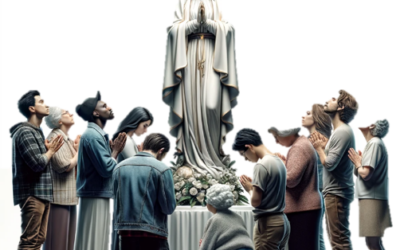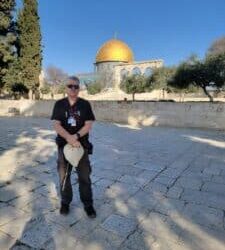A list of important Hindu terms and their definitions:
- Advaita – Nondual, one without a second.
- Ahimsa – The doctrine of nonviolence to all life. Ahimsa forms the basis for Hinduism’s vegetarian emphasis.
- Atman – The self or the spiritual essence of all individual human beings. The Atman is what passes from one life to the next in reincarnation.
- Asanas – The physical postures or ways of sitting in order to do yoga.
- Ashram – A spiritual community.
- Avatars – Literally meaning manifestations of God. They are said to intervene in history to fight against evil and maintain Dharma. Examples of Avatars could include Krishna and Buddha, among many others. Some Hindus even consider Jesus to have been an Avatar. Traditionally, there are ten avatars of Vishnu.
- Bhagavad Gita, The – Written between 500-200 B.C., the Bhagavad Gita is an epic poem that tells the story of Prince Arjuna and his dialogue with Krishna (who has taken the form of Arjuna’s chariot driver). Krishna guides Arjuna through his struggles with the moral implications of fighting a battle against an opposing force that contains close family members. With this as the backdrop, the conversation delves into deeper issues of Hindu philosophy and the path(s) to Moksha. The Bhagavad Gita is the most popular and well-known of the Hindu sacred texts.
- Bhakti – Devotion to a deity of guru.
- Bhakti yoga – This is a form of yoga through which a person loses one’s self through devotion to a personal concept of God including either Krishna or Rama.
- Brahma – “The Creator.” The first god in the Hindu Trimurti.
- Brahman – The basic reality behind all things. Not to be confused with Brahma who is the creator god in the Hindu Trimurti.
- Brahmin – The priestly caste of Hinduism.
- Caste – One of the four main social classes sanctioned by Hinduism.
- Devi – “Goddess”; the Divine Feminine, also called the Great Mother.
- Dharma – Is most specifically referring to the social order that includes a Hindus personal behavior and attitudes. At the simplest level, it describes a believer’s religious and social duties according to their status and stage of life.
- Dhyana – Meditation
- Durga – “Awe-inspiring,” “distant”; a goddess, a form of Devi.
- Dvaita – One of the major schools in Vedantic philosophy, defined by its assertion that entities have a real existence apart from Brahman.
- Guru – Spiritual leader.
- Hatha Yoga – The spiritual discipline of postures and bodily exercises.
- Ishvara -“Lord,” a common name for God.
- Jnana Yoga – The spiritual discipline of knowledge and insight.
- Kali – A form of Devi; a goddess associated with destruction and rebirth.
- Karma – The principle whereby a person’s willful actions in one life will not only directly affect events in that life, but will also determine the circumstances of the next rebirth. Every action has a direct consequence. Some deeds lead to desirable results, whereas others will mean negative results both in this life and in future incarnations. Such undesirable results could mean coming back as an animal or a human that is blind, disabled, or lower down the social hierarchy. Karma from previous lives is also often appealed to as an explanation of why tragedies happen to people who do not seem to deserve them.
- Karma Yoga – The spiritual discipline of selfless action.
- Krishna – A god associated with divine playfulness; an incarnation of the god Vishnu.
- Mantra – A short sacred phrase, often chanted or used in meditation.
- Maya – “Illusion.” The idea that the visible world is an illusion that clouds the reality of absolute oneness.
- Moksha – Is the term used to describe freedom from the cycle of birth and death and is the ultimate goal in the Hindu religious life. Release from the bondage of the Law of Karma and union with the Supreme Being [Brahman]. It is generally thought that one achieves Moksha through knowledge [Gyana], devotion [Bhakti], or right works [Karma].
- Nirguna – Lacking all attributes or distinctions.
- Nirvana – The personal self-merging into the impersonal and undifferentiated oneness of the Ultimate Self. Nirvana is the goal of enlightenment.
- OHM – The mantra that contains all of the primal vibrations of the universe. It is considered to be the queen of the Mantras.
- Puja – Worship of deities at an altar.
- Raja Yoga – The “Royal” discipline of meditation.
- Rama – A god and mythical king; a form of Vishnu.
- Reincarnation – According to Hinduism, the soul continues to be reborn or reincarnated on earth until the time that it becomes perfect and reunites with its source, Brahman. The soul is said to inhabit many different bodies during the ongoing cycle of birth and death and is described in one of the Hindu sacred texts the Bhagavad Gita – ‘Just as a man discards worn-out clothes and puts on new clothes, the soul discards worn-out bodies and wears new ones.’ 2.22
- Samadhi – A focusing of the mind with the goal of emptying it of all thoughts and of attaining one’s absorption into the ultimate Oneness.
- Samsara – The endless cycle of birth, death, and rebirth. The Hindu life is in some ways an effort to bring that cycle to an end. It describes the state in which the soul endures endless reincarnation.
- Sannyasin – A wandering holy man or ascetic.
- Shiva – “The Destroyer.” The third god in the Hindu Trimurti.
- Transmigration – (see Reincarnation)
- Trimurti – Hinduism’s triad of primary gods, namely Brahma, Vishnu, and Shiva.
- Upanishads – Written meditations on the spiritual essence of the universe and the self.
- Vedas, The – Some of the sacred religious texts of Hinduism which were allegedly written around 3,000 B.C. and are known as some of the oldest religious texts in the world. There are four collections of the Vedas which are collections of ancient prayers and rituals.
- Vedanta – The chief Hindu philosophy, dealing mainly with the Upanishadic doctrine of the identity of Brahman and Atman. Vedanta reached its highest development c. 800 A.D. through the philosopher Shankara.
- Vishnu – “The Preserver.” The second god in the Hindu Trimurti.
- Yoga – A physical and mental discipline for the purpose of spiritual liberation or empowerment.
Sources
- Dictionary.com.
- Halverson, Dean C. “Hinduism” in The Compact Guide to World Religions. Minneapolis: Bethany House, 1996, pp. 100-101.
- Johnsen, Linda. The Complete Idiot’s Guide to Hinduism. New York: Alpha Books, 2002, pp. 369-79.
- Molloy, Michael. Experiencing the World’s Religions. Mountain View, CA: Mayfield Publishing, 1999, pp. 98-99.





